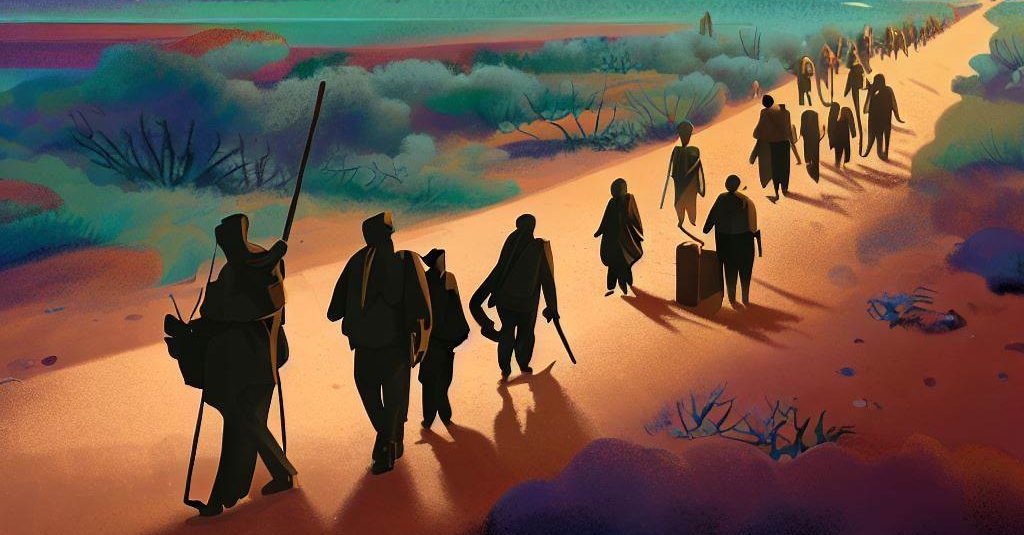The Navajo Long Walk: A Historical Analysis of Forced Relocation and Its Enduring Impact
The Navajo Long Walk is a critical event in the history of the Navajo people and the broader narrative of Native American experiences in the United States. In 1864, over 8,000 Navajo were forcibly removed from their ancestral lands and marched over 300 miles to a desolate reservation at Bosque Redondo in present-day New Mexico. This article will explore the historical context leading up to the Long Walk, the experiences of the Navajo during this forced relocation, and the enduring impact on the tribe and their relationships with other Native American tribes and the United States government.
Historical Context:
The historical context of the Navajo Long Walk is rooted in the expansion of the United States into the Southwest and the government’s attempts to control and “civilize” Native American tribes. As the United States acquired territory in the Southwest through the Mexican-American War (1846-1848), conflicts between the Navajo and the U.S. government increased. The United States sought to contain and control the Navajo people through treaties and military force, culminating in the decision to forcibly relocate the tribe to Bosque Redondo.
Timeline of Events Leading Up to the Navajo Long Walk
1846-1848
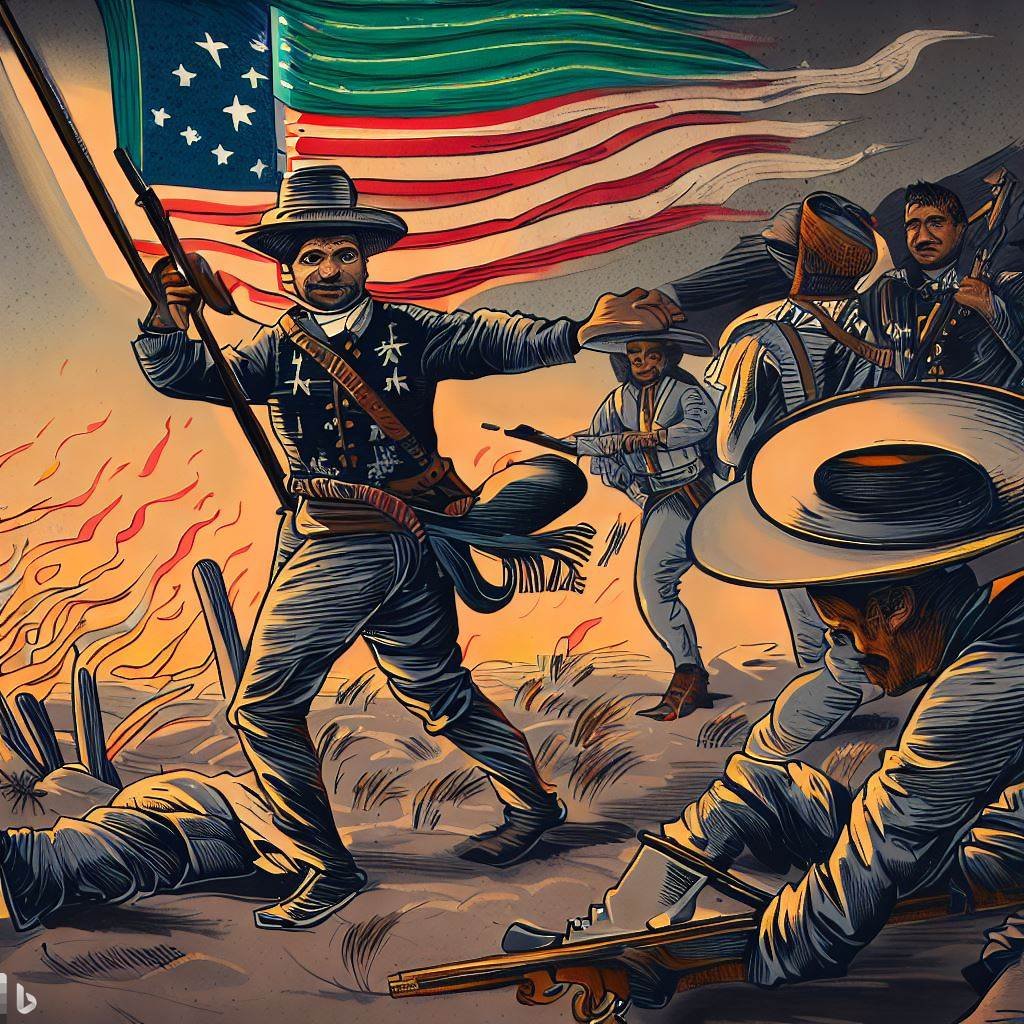
1849-1863
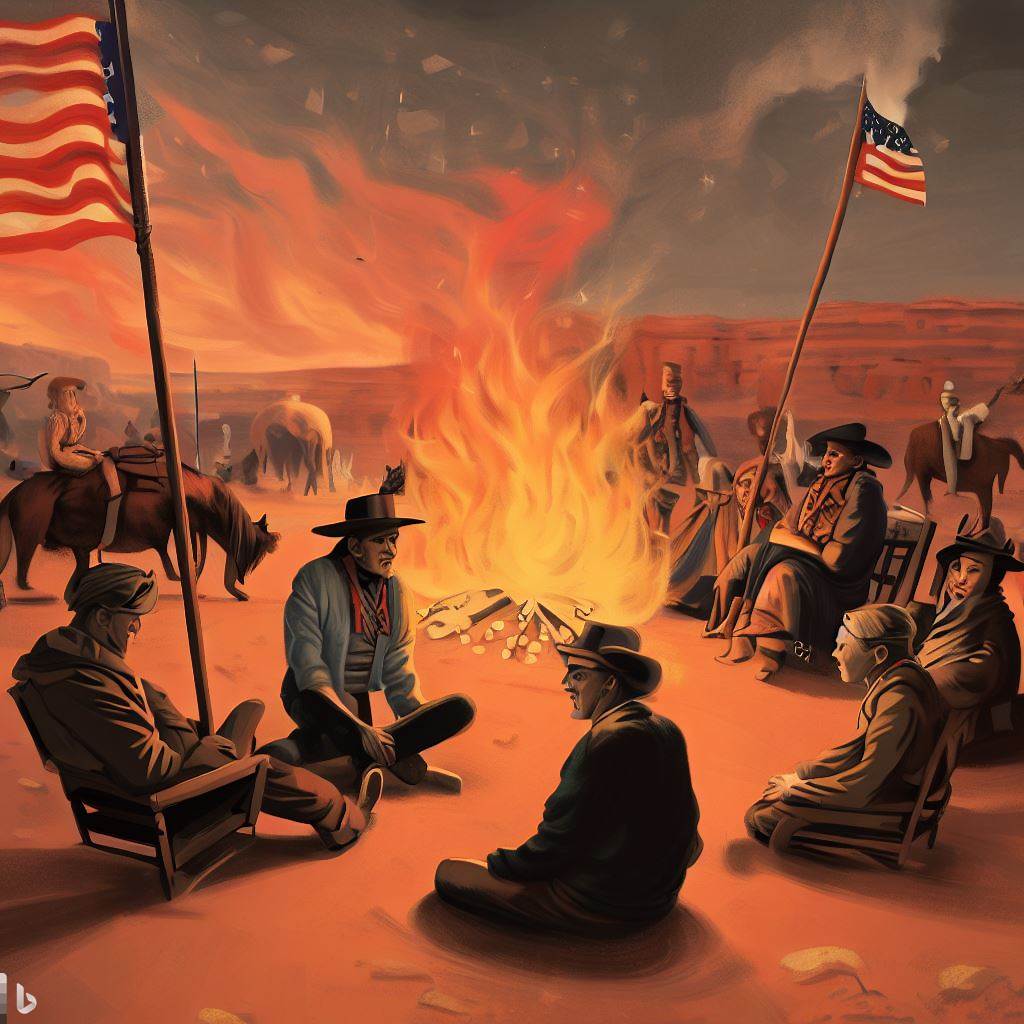
1863
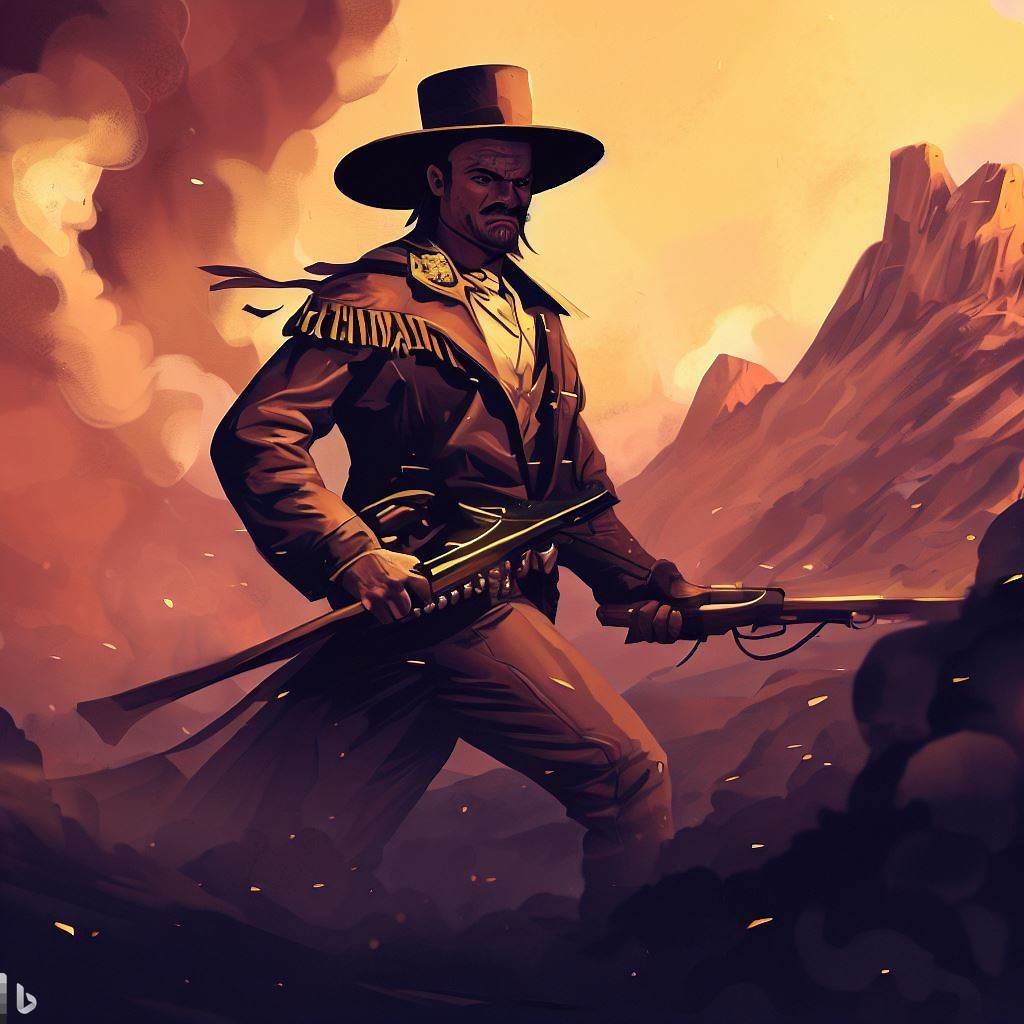
1864
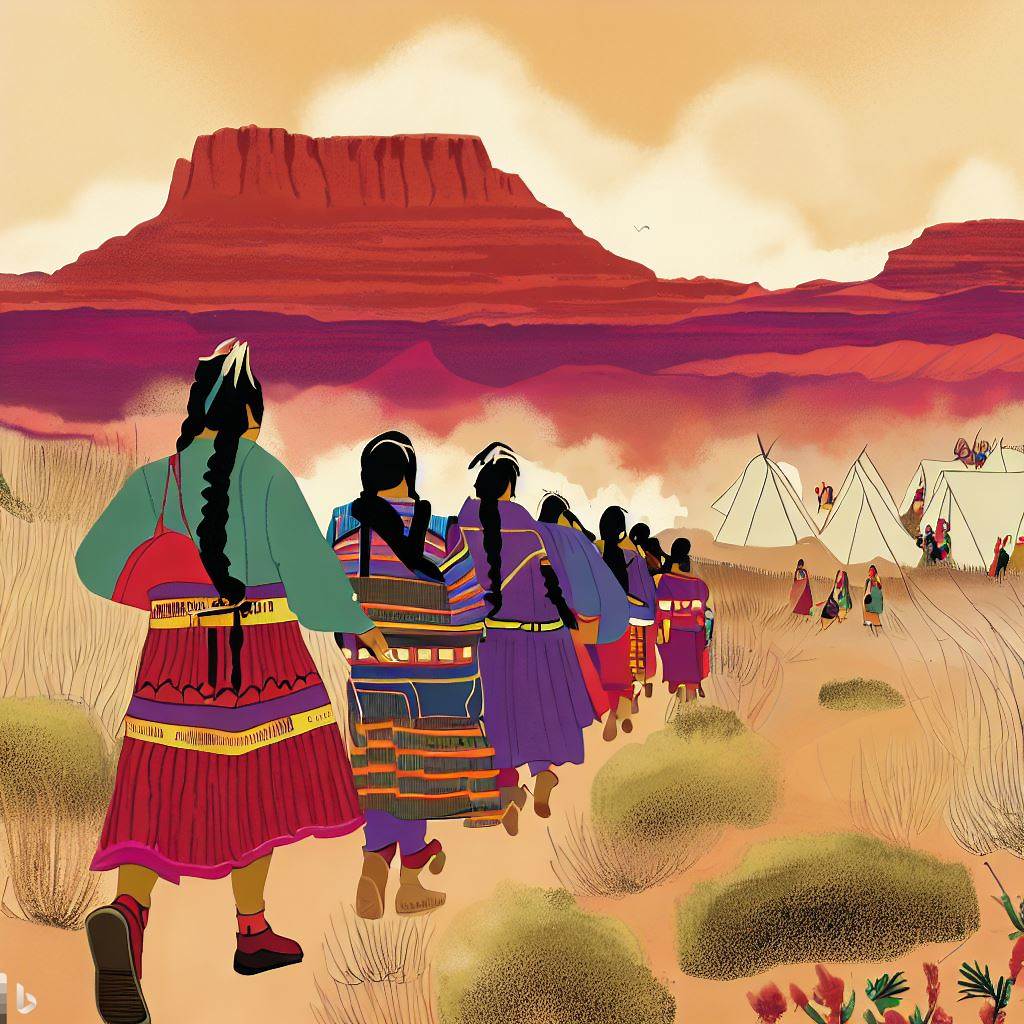
The Navajo Long Walk:
The Navajo Long Walk began in the spring of 1864 under the orders of General James Carleton, who had tasked Colonel Kit Carson with the forcible removal of the Navajo people. Carson’s campaign against the Navajo involved destroying their crops, livestock, and homes, ultimately forcing the starving and desperate Navajo to surrender. Over 8,000 Navajo were then forcibly marched to the Bosque Redondo reservation, a journey that would claim the lives of hundreds of men, women, and children.
Key Statistics of the Navajo Long Walk
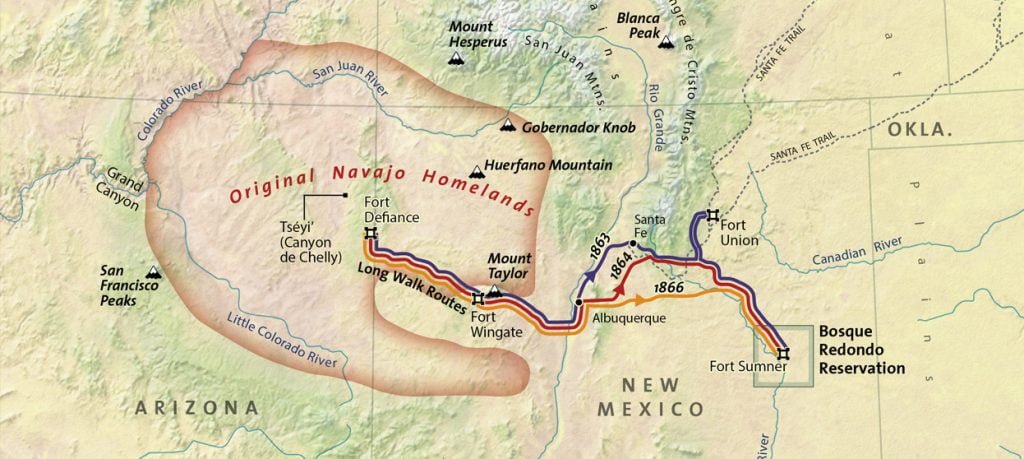
Life at Bosque Redondo:
The conditions at Bosque Redondo were dire, as the Navajo faced overcrowded living conditions, disease, malnutrition, and a lack of resources. The land was unsuitable for agriculture, and the Navajo struggled to grow enough crops to sustain themselves. Additionally, the U.S. government’s attempts to “civilize” the Navajo through education and forced assimilation further alienated the tribe from their traditional way of life. During this time, the Navajo also interacted with the Mescalero Apache, who had been forcibly relocated to Bosque Redondo as well. This shared experience of hardship and displacement further strengthened the bond between the two tribes.
Key Aspects of Life at Bosque Redondo
The Treaty of Bosque Redondo and the Navajo’s Return Home:
The appalling conditions at Bosque Redondo eventually led the United States government to acknowledge the failure of the reservation experiment. In 1868, the Treaty of Bosque Redondo was signed, allowing the Navajo to return to a portion of their ancestral lands. The treaty established the Navajo Nation, which provided the tribe with a degree of autonomy and the ability to govern themselves.
Enduring Impact of the Long Walk:
The Navajo Long Walk remains a deeply traumatic event in the tribe’s history and continues to shape the relationship between the Navajo people and the United States government. The forced relocation and subsequent suffering of the Navajo at Bosque Redondo led to a profound sense of loss, both in terms of lives and cultural heritage. The Long Walk also influenced the tribe’s relationships with other Native American tribes, particularly the Mescalero Apache, with whom the Navajo shared the experience of forced relocation.
Enduring Impact of the Navajo Long Walk
Conclusion:
The Navajo Long Walk serves as a stark reminder of the immense suffering endured by Native American tribes during the period of United States westward expansion. By examining the historical context, the experiences of the Navajo during the forced relocation, and the enduring impact on the tribe, this article has aimed to foster a greater understanding of the interconnected histories, cultures, and experiences of Native American tribes. The Long Walk highlights the resilience of the Navajo people and their ability to adapt and survive despite immense adversity. Furthermore, it underscores the importance of recognizing and understanding the shared histories and experiences of Native American tribes, as well as their continued struggle for justice, autonomy, and cultural preservation.
References:
- Brown, D. (1970). “Bury My Heart at Wounded Knee: An Indian History of the American West”. New York: Holt, Rinehart & Winston.
- Iverson, P. (2002). “Diné: A History of the Navajos”. Albuquerque: University of New Mexico Press.
- Kelly, L. (1968). “Navajo Roundup: Selected Correspondence of Kit Carson’s Expedition Against the Navajo, 1863-1865”. Boulder, CO: Pruett Publishing.
- Thompson, G. (1976). “The Army and the Navajo: The Bosque Redondo Reservation Experiment 1863-1868”. Tucson, AZ: The University of Arizona Press.
- Map of the Navajo Long Walk courtesy of the Smithsonian, National Museum of the American Indian.

